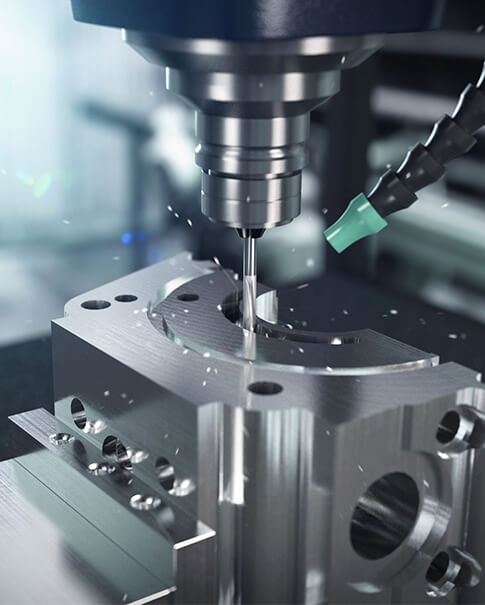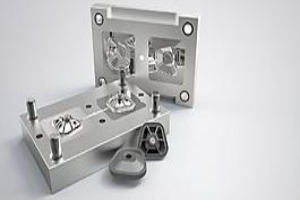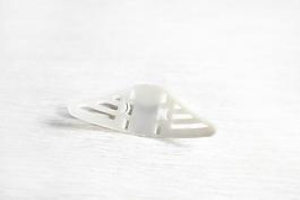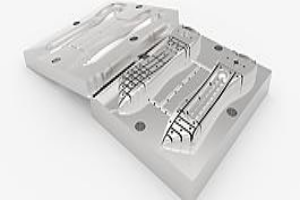
Injection Moulding
|
What is injection molding?
Plastic injection molding is the process of making plastic parts via the injection of molten plastic — typically a thermoplastic — into a metal mold, which is usually made from steel or aluminum.
The thermoplastic injection moulding process at GT is a standard process involving an aluminium mould. Aluminium transfers heat much more efficiently than steel, so does not require cooling channels - which means the time we save on cooling can be applied to monitoring fill pressure, cosmetic concerns and producing a quality part.
Resin pellets are loaded into a barrel where they will eventually be melted, compressed, and injected into the mould’s runner system. Hot resin is shot into the mould cavity through the gates and the part is moulded. Ejector pins facilitate removal of the part from the mould where it falls into a loading bin. When the run is complete, parts (or the initial sample run) are boxed and shipped shortly thereafter. Request your Free Design Cube which shows surface finishes and thick and thin finishes. |
From left to right, the components of a rapid injection moulding press include: ram (1), screw (2), hopper (3), barrel (4), heaters (5), materials (6), nozzle (7), mould (8), and part (9). |
Why should you choose GT?
Need to quickly test out the market with low-volume parts? Or want to create large quantities of production parts? Then you can’t go wrong with our injection molding services. GT produce high-quality prototype moldings from aluminum molds with quick turnaround times. Our customers can test out their designs for manufacturability and functionality, fast. We also offer plastic injection molding for your high-volume production needs.
Whether you need rapid tooling, mass production mold making or end-use plastic molding with tight tolerances, our team of experienced specialists can offer a cost-effective solution at each stage.
There are huge numbers of injection molding providers. Why should you choose us as your injection molding supplier? Here are the top 3 reasons:
1. Experienced Engineers
Our molding engineers have rich experience after handling thousands of projects, whatever parts they come across, they can get the right parameters immediately.
2. Advanced Facilities
By using imported and top brand locally made injection molding machines, we are able to make the most precise moldings.
3. Unlimited Capacities
Aside from our in-house facilities, we have built up strong networks with our partners. Full fleets of injection machines, from 10 tons to 1000 tons are ready for your orders without delay.
Steps to get injection molded parts
For any injection molding project, important decisions need to be made before the molding process begins. The workflow often goes like this:
1. Select the material: Material selection is the first step when preparing for injection molding. Normally, product designers will have certain injection molding materials in mind when designing a new product. And if they are unsure, making rapid prototypes is the best way to test out different material options.
2. Confirm the quantity: It is important to discuss proposed quantities of molded parts at the outside, because the number of shots determines the kind of mold to be used: a prototype mold or a high-volume production mold.
3. Mold flow analysis: Injection molding mold flow analysis software provides a simulation report, predicting factors like part warpage and cooling channel efficiency and ultimately helping manufacturers avoid mistakes. In the event of a negative report, the design can be changed to improve the injection molding process.
4. Create the mold: Mold making is a specialist process; these days, molds are often made via CNC machining and EDM, since these processes can produce highly detailed metal molds in a short space of time.
5. Create the moldings: Once the mold is ready to go, the injection molding process can begin as explained in the “What is the injection molding process?” section.
Plastic Injection Molding FAQ
What plastics can you use with injection molding?
Injection molding can use almost any type of plastic that can also be combined together. This unmatched versatility is what makes injection molding so popular and suitable for some of the most demanding industries in the world. You can check out our selection of available materials and finishes on this page.
What is the process behind injection molding?
The plastic pellets are melted and are then inserted in liquid form into the mold tool, where it cools and takes the required shape. The process allows for high precision and tight tolerances because it can be replicated exactly each time.
Why should I use injection molding?
Injection molding is one of the most affordable ways to manufacture large quantities of parts, especially for bigger production runs. Even though designing and creating the mold can take time, after that, the process becomes very affordable and efficient.
How quickly can you produce parts using injection molding?
Before production can begin, we will first need to design the injection mold tool. How long this takes will depend on the complexity of your project, but the usual timeline can be as short as a week and as long as a couple of months.
Advantages of Injection Molding:
Injection molding is an excellent option for the large-scale production of plastic parts and components. Injection moulding has a number of advantages. It is a cost effective, highly repeatable way of producing plastic parts with high precision. Once set up, it can produce a huge amount of parts per hour from a wide range of different plastics plus other materials such as liquid silicone rubber.
Here we will take you through the main advantages and explore when it may be better for you to consider another option:
The mold injection process is highly efficient, allowing to produce large orders quickly.
Once you have developed the moulds, the process is extremely fast with cycle times as short as 10 seconds. It is excellent for medium and high-volume production runs for anything from 10,000 parts to well over 100,000 depending on what moulds you use.
For high output production runs the cost per part is very low. Even for medium volumes – in the range of 5,000 to 30,000 parts, you can keep the costs down by using aluminium moulds instead of steel.
You can manufacturer identical products over and over again. This is ideal when you need to have parts with high tolerances and reliability across high volumes.
There is a huge range of plastic materials that you can select from depending on what properties you need from your final part. And you are not limited to plastic.
Injection moulding produces very little waste when compared to many other manufacturing processes. Even if there is any unused or waste plastic, you can recycle it for future use.
The high pressure of injection ensures that the melted material reaches every crevice of the mold before curing. This enables design engineers to incorporate complex geometrics and intricate elements into their designs.
Fast and efficient production ensures a low cost per part, while high production volumes produce further economies of scale. Aluminum, a cost-effective and readily available material, can be used for tools to control costs.
With the proper treatment, injection-molded parts come out of the mold with a smooth finish that requires no further refinement.
Parts of the product:
|
|
 |
|
 |
 |
|